It’s the festive season so what better time to talk about sequins? As with our sweater discussion last week, not all sequins are equal. Well, actually, at a basic level, sequins are kind of the same: they’re not good for the environment because they’re generally made from fossil-based plastics. They will live in our landfills forever, so the best sequins are the ones which already exist aka secondhand and vintage. It always makes me uncomfortable to see all the new sequin clothing in every store when I go to the mall. More so than other clothing, sequin trends don’t change that much over the years, and the exact same styles that are currently in stores can be found at the thrifts in healthy supply. So if you’re looking to add sequins to your closet — which, as a magpie, I totally understand — always shop secondhand first.
While sequins might all be the same (outside of couture houses, perhaps), the construction of sequin clothing is not all the same. There are 2 things in particular which, in my non-expert-but-sequin-loving opinion, make or break sequin clothing: (1) the manner in which sequins are sewn on, and (2) the backing used for the sequins.
Let’s start with sewing.
If you look closely at a lot of sequin pieces, you will notice that the way in which the sequins are sewn/attached vary widely and that it makes a huge difference in how the overall piece looks. Take this, for example:
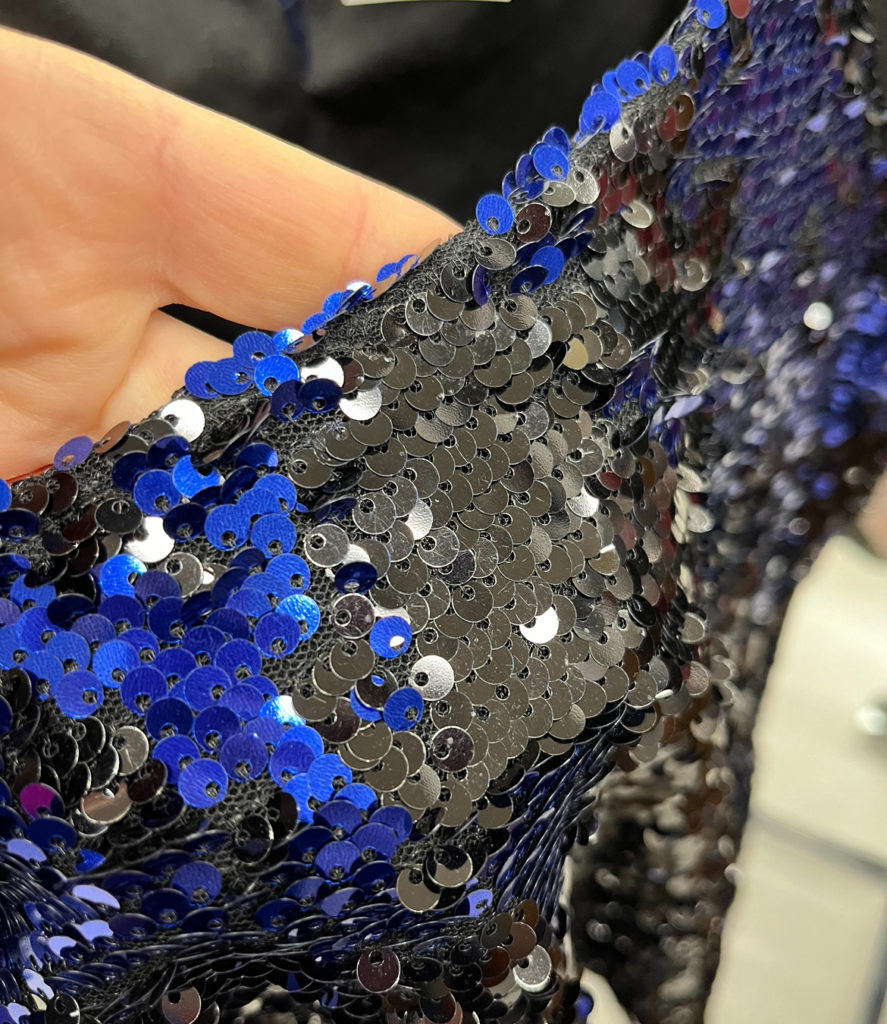
This looks like someone spray-gunned sequins onto this shirt. It looks sloppy up close and the garment looks cheap from a distance. Because the sequins don’t sit flat, this is much more likely to be scratchy (especially around the neckline and armholes) and not catch the light in the same way.
Sequins that are sewn onto the garment in a more orderly fashion (rows, for example) and lie flat result in a much nicer-looking garment, IMO. Here is another example:
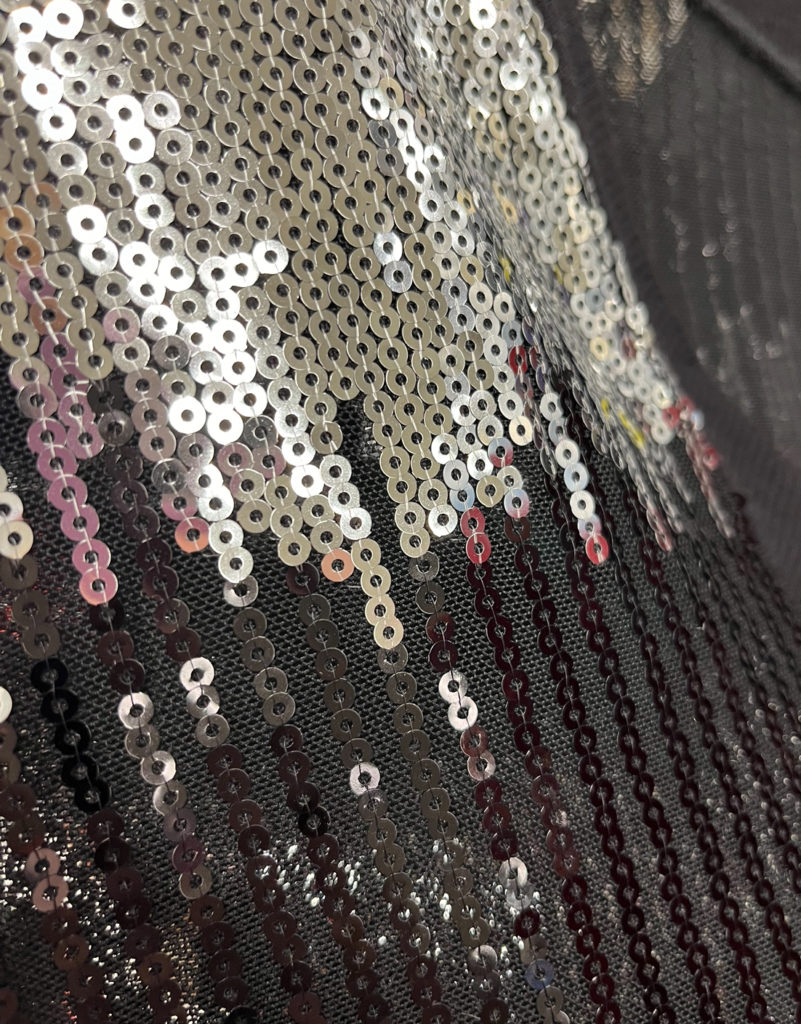
Nothing special but still miles better than the first photo. But compare it to this piece:
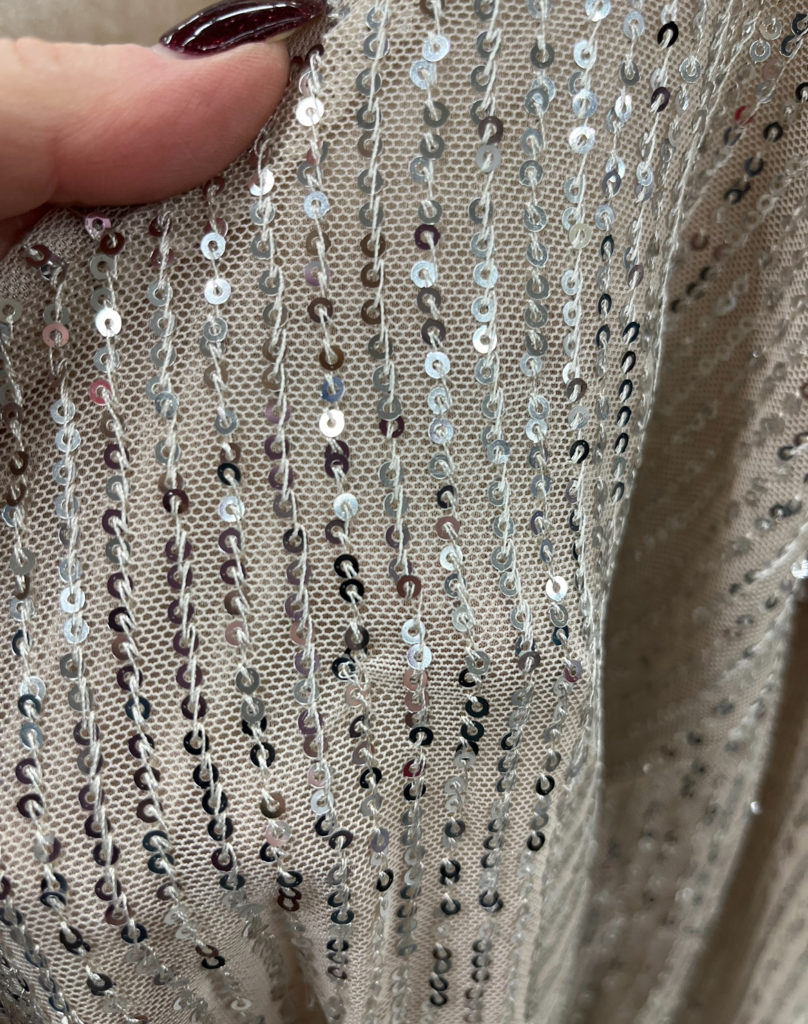
Similar concept but the execution is visibly so much poorer. That white thread – yikes! Looks messy and prone to snags.
Here is a similar design but with somewhat better execution. Still not great (you can see the sequins are lifting in places) but at least they used better thread and more rows to create better coverage and visual appearance.
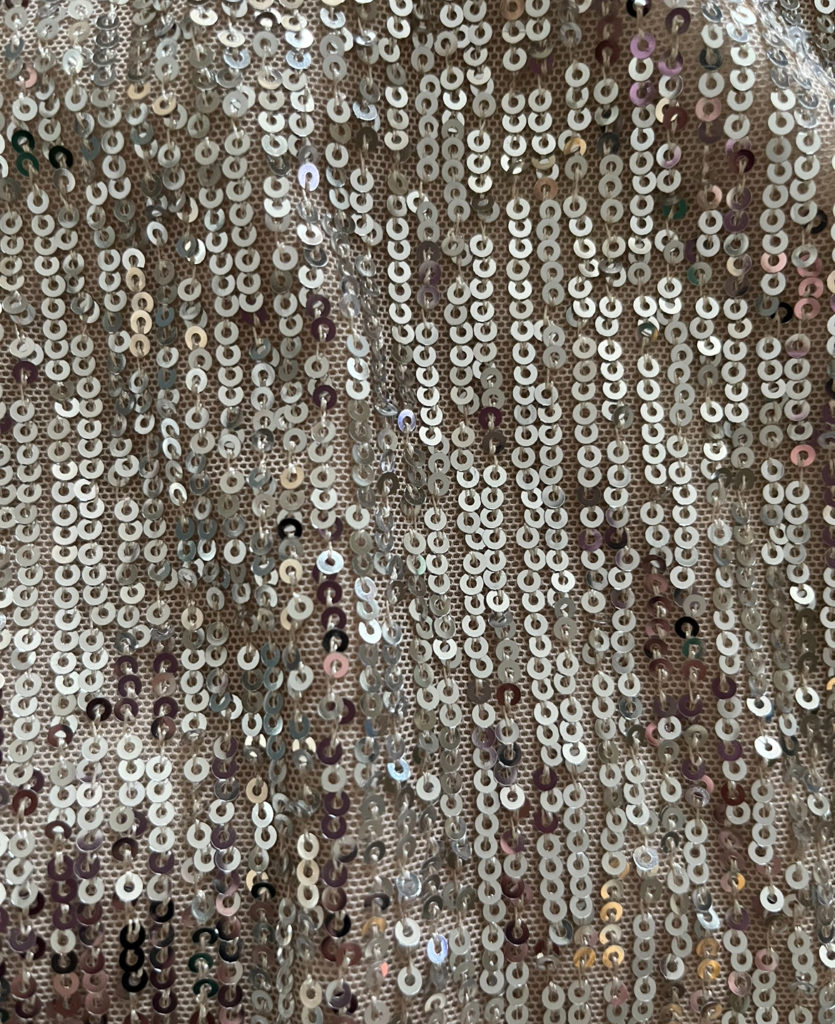
The above is actually an H&M skirt that I own. It’s probably one of the worst quality sequin pieces in my closet but I’ve kept it because I haven’t found a better quality silver sequin skirt yet. It’s not awful, but it’s not good either. Writing this post made me realize that I probably should just let it go. It’s not a coincidence that I haven’t worn it as much as my other sequin skirts over the years. Compare it, for example, with this (older) H&M skirt I also own:
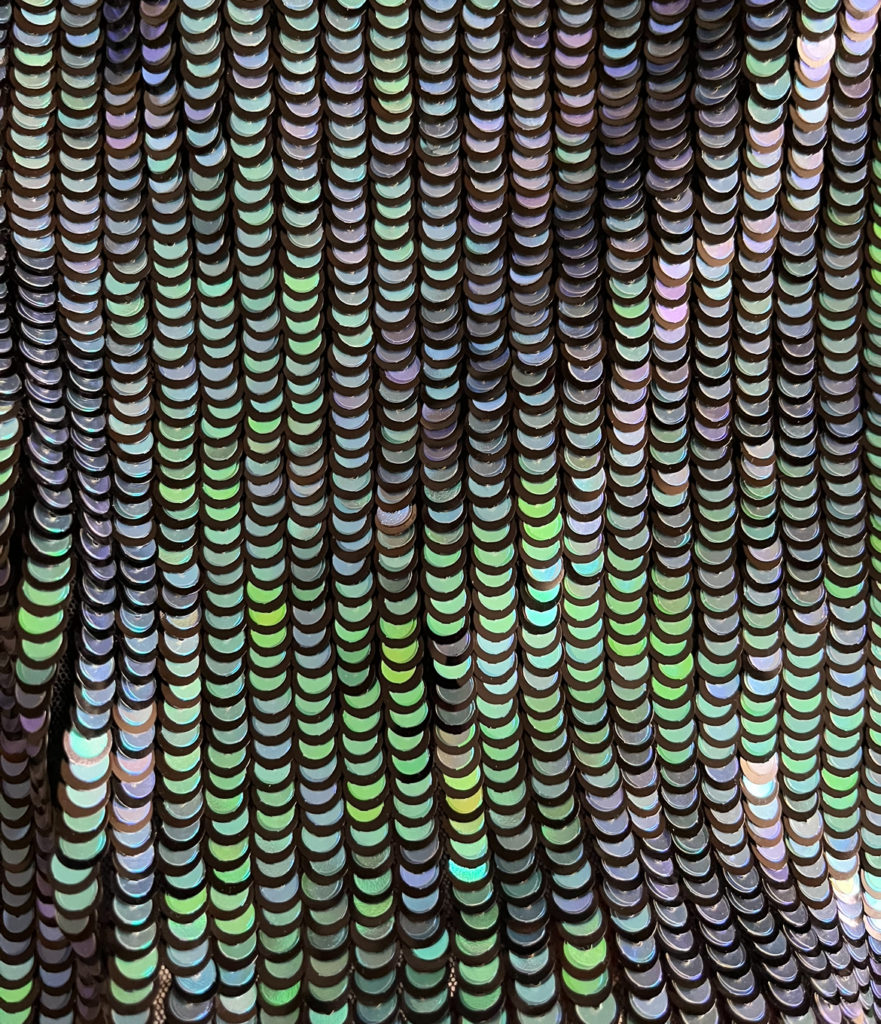
This is actually one of the nicest sequin pieces I’ve ever found. Look how nicely the sequins are attached. This skirt shimmers like whoa — it looks like a mermaid’s tail in the best way:
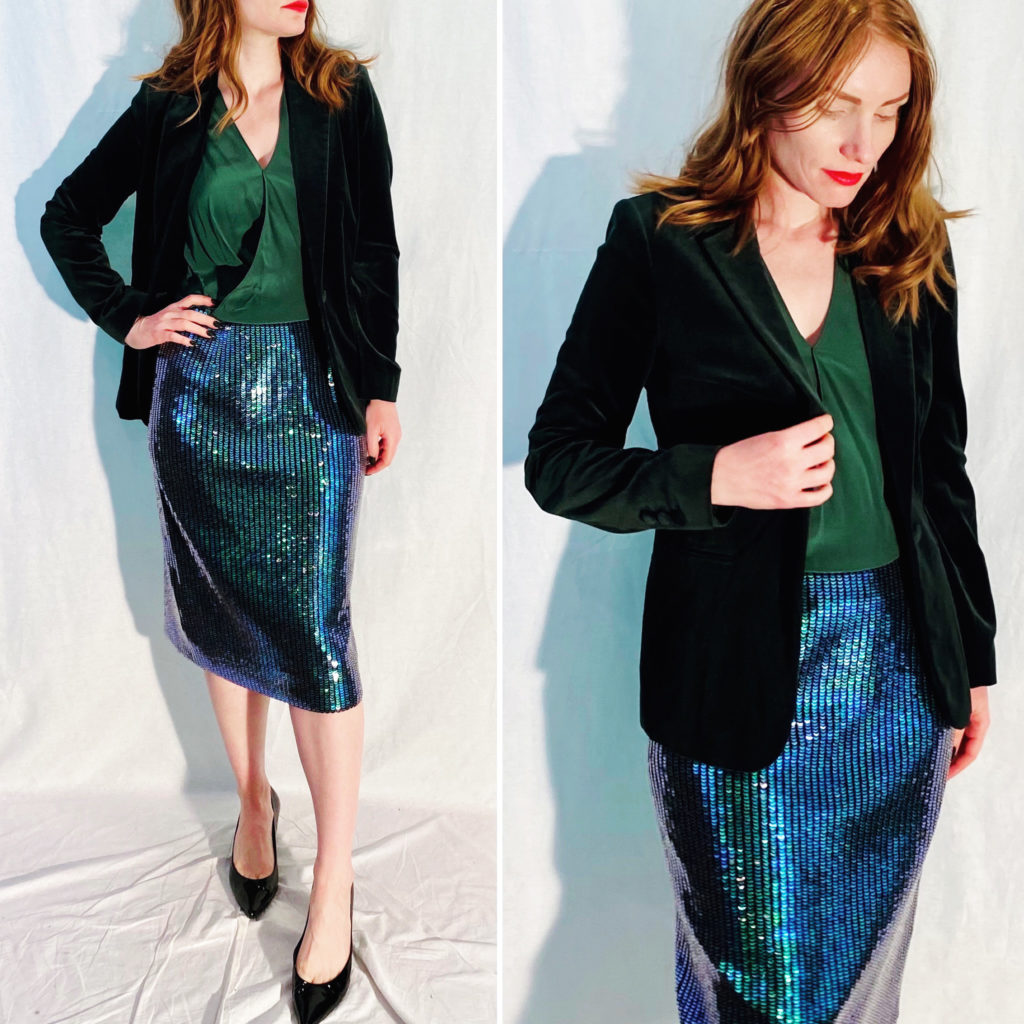
Here are 2 more examples of nice sequins; the first is a MICHAEL Michael Kors skirt, the second is a BCBG skirt:
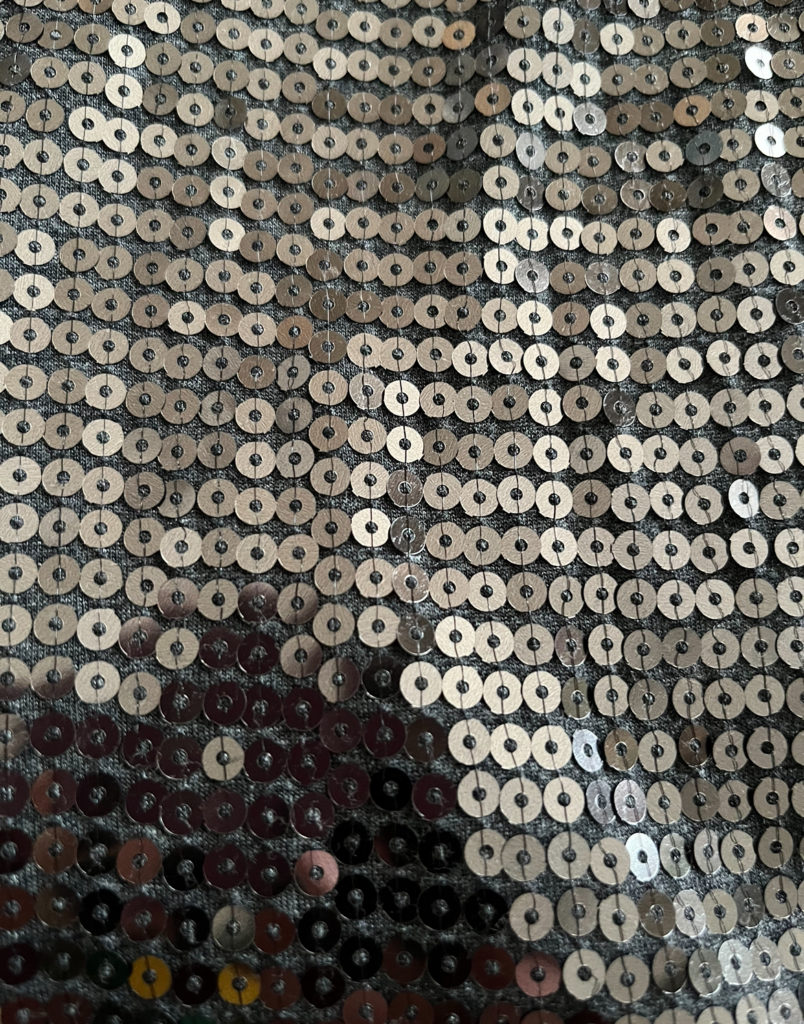
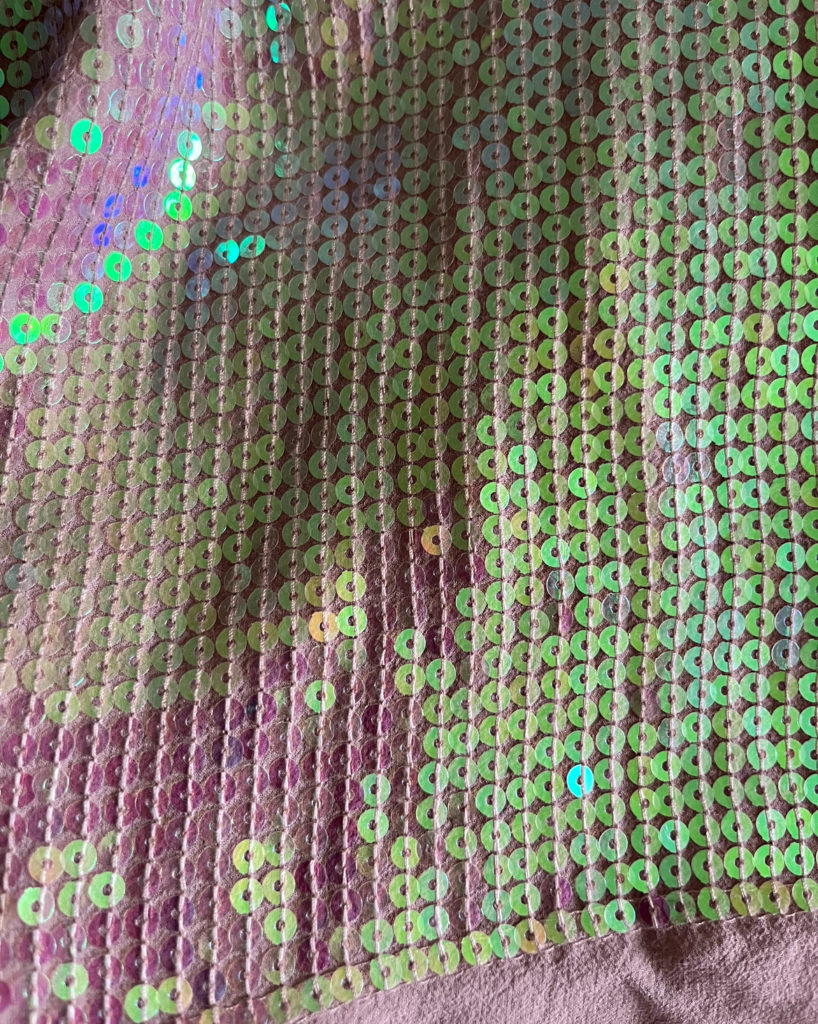
Again, you can see how nice and orderly these are. They’re laid out in rows like the silver H&M skirt but the way the sequins are attached is different — the sequins are attached in 2 places versus just one. It makes them more secure and also flatter.
The second thing to look for is the backing.
On the BCBG skirt above, the sequins are sewn on to silk, which is doubled up to create a kind of built-in lining. This is pretty rare, and it does have some downsides like lack of stretch. Most sequin pieces are backed on some kind of (polyester) mesh, like my H&M skirts:
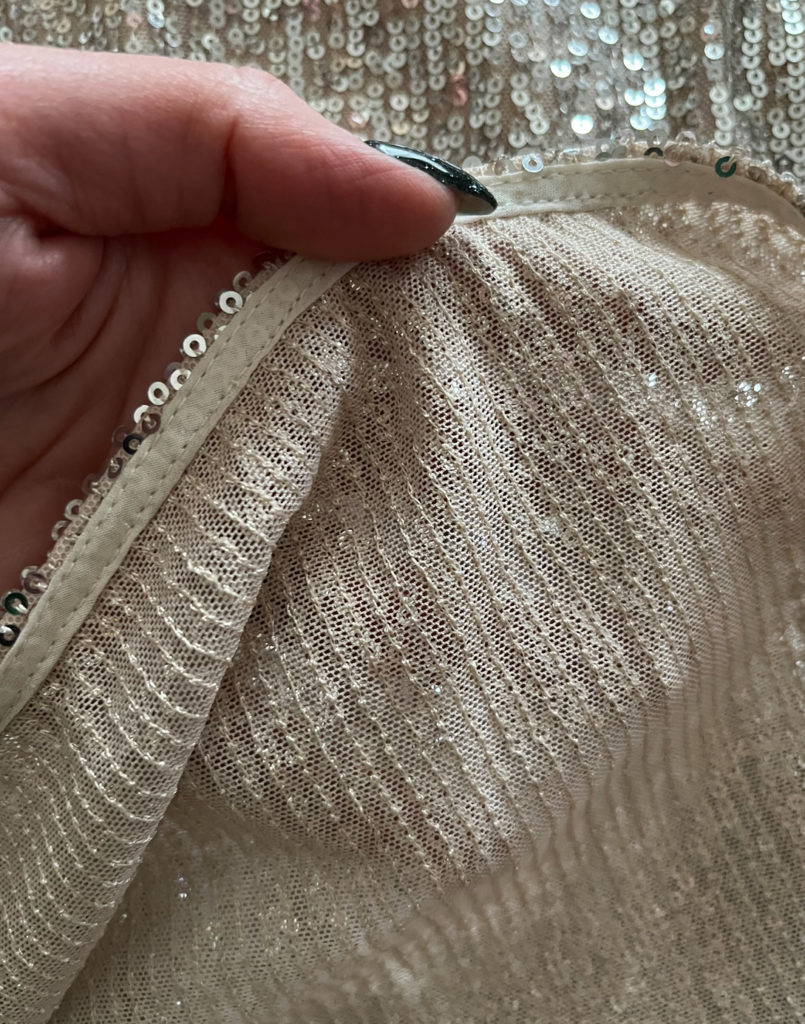
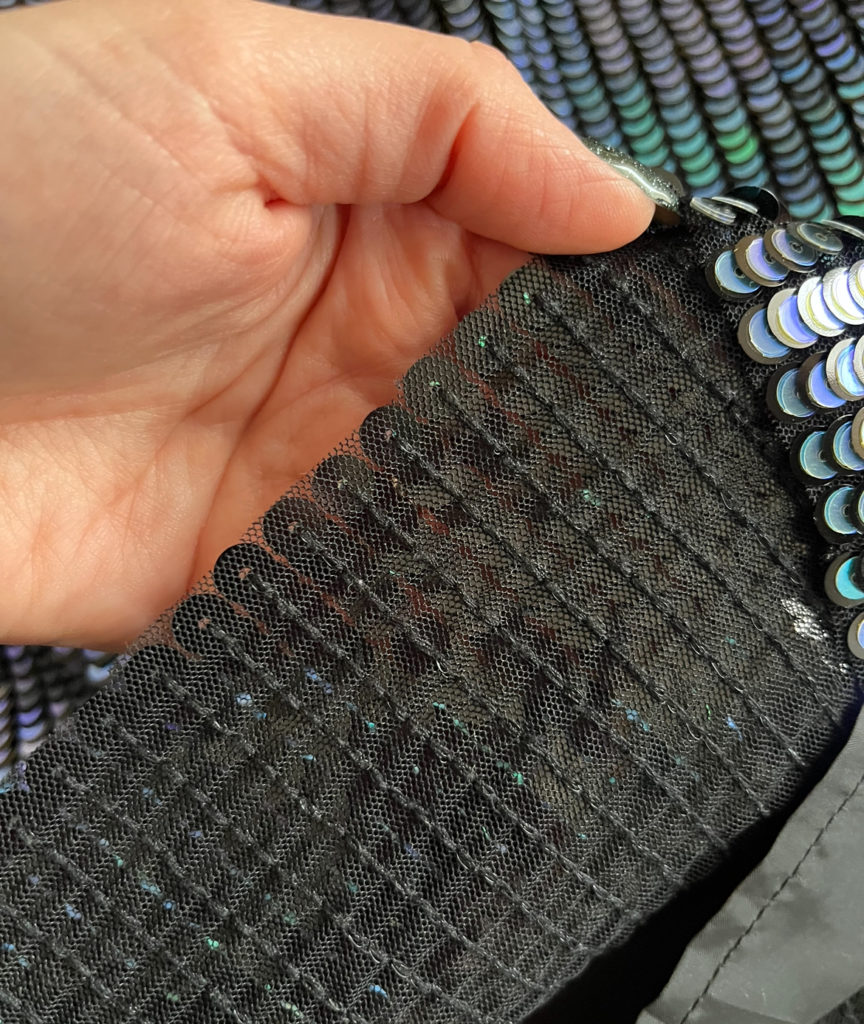
It’s probably not easy to see from these photos, but the mesh fabric is slightly different too. The silver skirt mesh has no stretch, whereas the black mesh has quite a bit of stretch. This is important because the mermaid skirt is a fitted style (pencil skirt) and the stretch of the mesh allows the skirt to fit more comfortably. The silver skirt is a fuller style, so stretch is less important. If your sequin garment is a form-fitting one, check how stretchy the outer sequin layer is.
I mention the “outer layer” because a separate lining is an absolute must, otherwise the scratchiness factor will be off the charts. Even a lining, if it’s very thin, can be dicey. One of the reasons why I prefer sequin skirts over dresses is because a polyester-lined dress often ends up feeling like a bag of sweat to me, especially if it’s long-sleeved too (whereas I find polyester linings less bothersome on bottoms).
A knit fabric backing is more rare than mesh, but my MK skirt is one example:

This material is also polyester (so it has stretch) but feels softer and less sweaty than the typical polyester used for linings. The downside of this particular skirt is that there is no additional lining; the sequins sit on top of this knit fabric, which sits on your skin. It’s juuust thick enough to not be too scratchy, but it’s not great. An example of cutting corners by a so-called “nicer” brand.
So, to summarize, here is what I look for when buying sequins:
- How securely are the sequins attached? Ideally, they should be neatly sewn and secured with 2 stitches, not just one.
- How do the sequins sit? Ideally, they should lie flat and not stick up in different directions.
- What kind of backing does it have? Mesh backing gives stretch, but there should be a good lining to protect the skin. If sequins are sewn on silk, consider whether it might be worthwhile to size up, since the material will offer little stretch.
- How does the finishing look? This is more of a general tip, but it’s always worth checking how the seams and hems are finished because that’s a good clue to the overall quality of the garment.

Thank you for this post. I’ve been on the lookout for a sequin skirt for a while but I want to be picky about it for the environmental reasons that you mention. I hope to keep it for years and years. Now I know what to look for!
I’m glad it was helpful 🙂 I hope you find the sequin skirt of your dreams!
That h&m mermaid skirt is a work of art!
P.S. Listened to your podcast interview- go you! What a cool opportunity!
Fascinating! And I love that I know what to look for now.